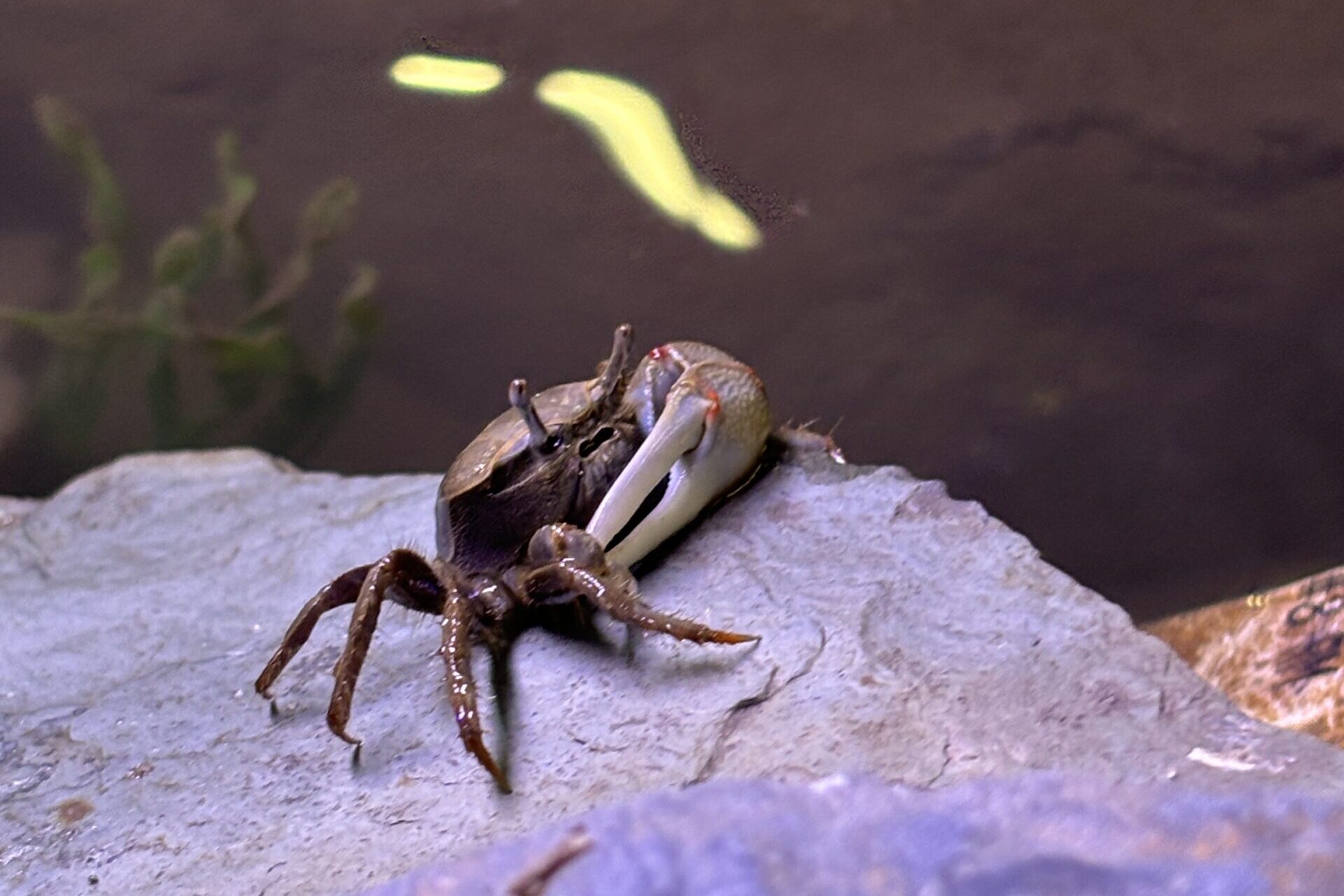Max Size: 2.6 cm (carapace width) (~1 inch)
Habitat: Salt marshes, muddy and sandy shorelines, often near shoreline grasses like Spartina alterniflora
Diet: Algae, bacteria, fungus and dead/decaying plant and animal matter
Fun Facts:
- Male fiddler crabs have one claw that is much larger than the other, while female fiddler crabs have two claws that are the same size.
- Male fiddler crabs wave their larger claw to attract female fiddler crabs during mating season. They also use sound, produced through this claw movement and by stamping their walking legs.
- Fiddler crabs are named for the males’ large claw, which resembles a fiddle when they bring their smaller claw to and from their mouth, like a fiddler drawing a bow across their instrument.
- Fiddler crabs dig burrows to make nests, escape predators, gain relief from the heat and hibernate during the colder months of the year.
- A male fiddler crab’s large claw can grow to nearly half of its total bodyweight – while larger claws offer an advantage during displays of aggression with other males, they also make it harder to burrow and feed.
- By consuming detritus, fiddler crabs can increase the amount of nutrients available for marsh grasses.
